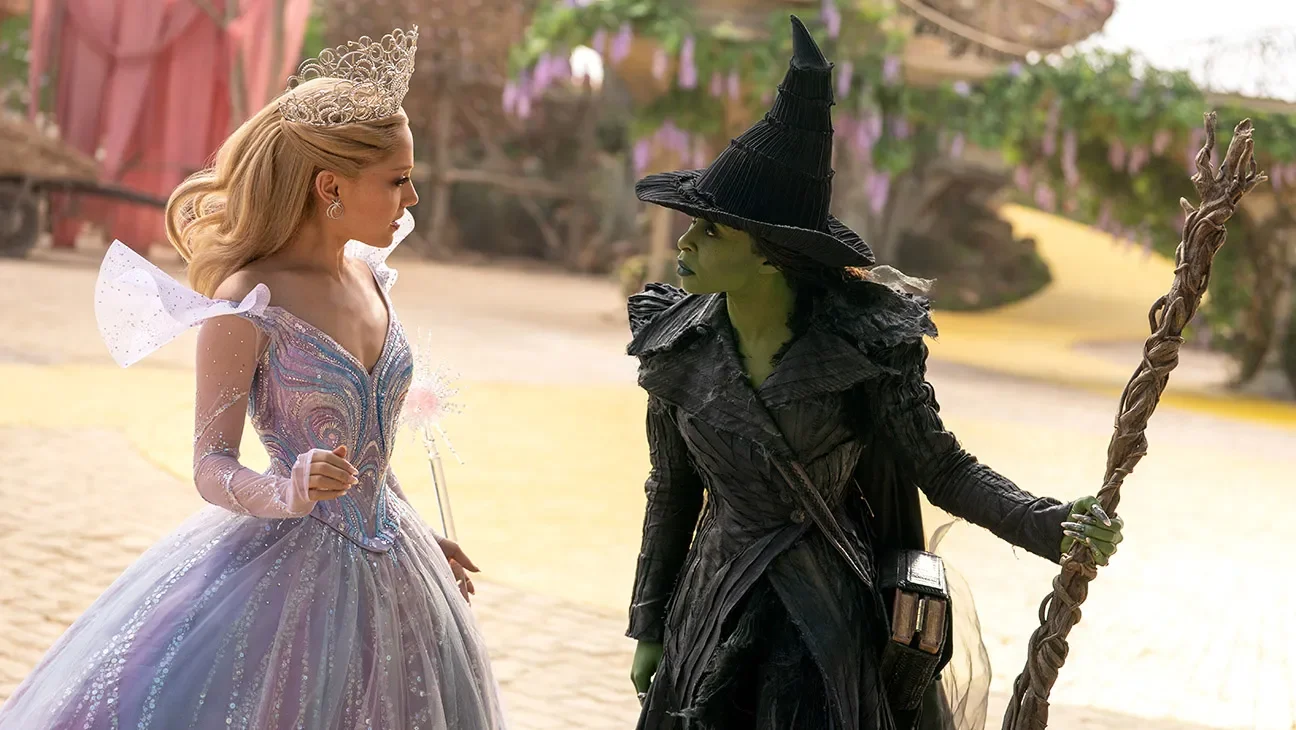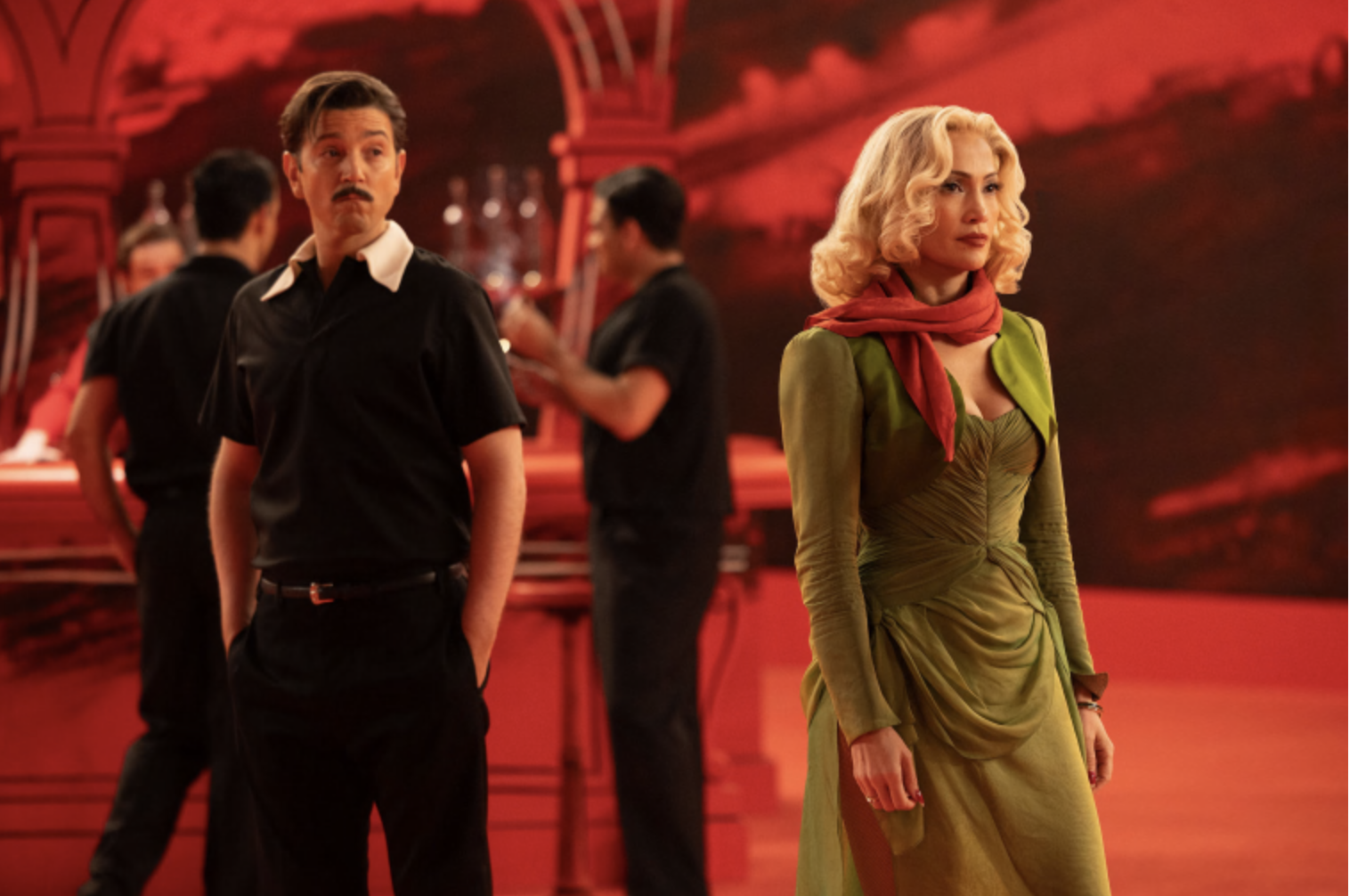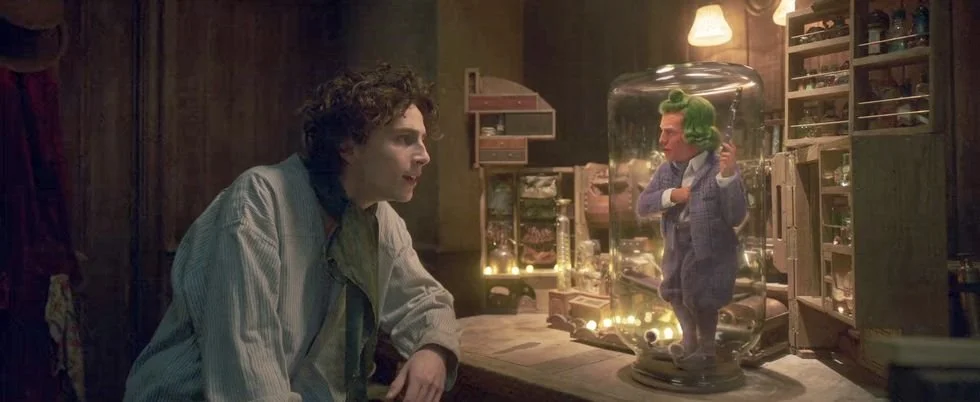WICKED: FOR GOOD
Directing: B
Acting: B+
Writing: B-
Cinematography: B+
Editing: B
Special Effects: B
Music: B-
I think I made the right decision not rewatching last year’s Wicked: Part I right before seeing Wicked: For Good. It could only have made For Good more of a disappointment—because Part I was undeniably, unequivocally better. Not by a wide margin, mind you, but a distinct one. One is left wondering what justification there was in even splitting this story into two parts, aside from box office hopes. I actually rather enjoyed Part I, even though at 2 hours and 40 minutes, I still thought it was indefensibly long—based on the first half of the stage play, which was only 5 minutes shorter than the entire stage play (including the 15-minute intermission). Here, For Good clocks in at 2 hours and 18 minutes, which means director Jon M. Chu has given us a combined four 4 and 58 minutes adapted from what was originally 2 hours and 30 minutes of actual content.
Which begs the question: why not just adapt this into a far tighter, 3-hour entertainment spectacular? I think I already answered this, really. We have to bleed this property for all it’s worth, right? Indeed, it’s easy to forget how complex the history of Oz is, with the original L. Frank Baum novel having been published in 1900; that book being adapted into the 1939 film The Wizard of Oz; the original Gregory Maguire novel Wicked: The Life and Times of the Wicked Witch of the West, a revisionist take on Baum’s characters, having been published in 1995; Stephen Schwartz’s stage musical Wicked having been first produced on Broadway in 2003; and then just last year, we got Wicked: Part I, the first half of Jon M. Chu’s film adaptation of the musical.
Every iteration of stories in this universe has had their devoted fanatics, of course—albeit none with more staying power than the 1939 film, which was enjoyed untouched for nearly 60 years, unless you count the bizarre 1985 film Return to Oz, which never garnered the same kind of devotion. I never read the original novel Wicked, and perhaps I should; I suspect I would like it better than the films—and to be clear, I do enjoy the films (and I particularly enjoy Part I). After seeing Wicked: For Good, which was a movie I wanted to be delightful but which was just fine, I rather wish I could see a direct film adaptation of Gregory Maguire’s novel, rather than a film adaptation of a stage musical adaptation of the novel, which by necessity strips an original story of much of its detail and nuance.
For Good spends a lot more time than Part I on drawing connections to The Wizard of Oz, right down to offering origin stories for the Cowardly Lion, the Tin Man, and the Scarecrow. In each case, the retconned explanation for their existence is a stretch at best, even in a world of magical characters. Dorothy even shows up here, sort of—she figures surprisingly prominently in the chain of events, but only as a shoehorned narrative device, often as a somewhat forced in-joke. It’s easy to imagine how this can work better in a stage production, in which our main characters refer to a Dorothy we never see except as a silhouette. Chu, on the other hand, gives us glimpses of her, either very briefly from behind or just parts of her body, which makes her feel much more real, and therefore inexplicably ignored.
A lot that was established, and even leaned on hard, in Part I gets little payoff here—particularly the existence of talking animals who are oppressed by the governing characters of Oz. There are only a few brief scenes with animals actually talking here, which is actually fine because this element was one of my least favorite parts of Part I. That’s a lot of effort for such little satisfaction of resolution, though. I did enjoy the arc of the flying monkeys, one of the elements I like in both films: their origins, who they were originally loyal to, and the manner in which their loyalty shifts to Elphaba. They also, collectively, make for some of the more memorable cinematic images in For Good.
And yes, there are some good songs in For Good, particularly “I Couldn’t Be Happier” and especially “For Good.” Again, though, they still pale in comparison to what we got in Part I (and, by all accounts, this is a common refrain about Act I versus Act II of the stage musical): “Dancing Through Life,” “Popular,” and especially “Defying Gravity,” which serves as the spectacular big finish of both the first act of the play and the first of these two films. Part I also featured delightful choreography, which is all but nonexistent in For Good. This film spends much more time on Oz’s society turning for the worse, and a reconciliation between Elphaba and Glinda that is ultimately tragic.
Part I was so enjoyable, though, that it creates a lot of goodwill that carries into For Good, in a way that I don’t think For Good would be able to sustain on its own. People went to see the first film multiple times, and there’s no way that’s going to happen as much, if at all, with For Good. But we still love these characters, who mean just as much to us now as before, thanks in large part to the production for both films having taken place at once. We feel the love and struggle between Elphaba and Glinda because Cynthia Eivo and Ariana Grande embody them, respectively, so wholly and fantastically, with such clearly genuine affection for each other. If there is any reason to see this movie, it’s the two of them.
Splitting Wicked into two films really does both films a disservice. Part I feels like a great start that we now know had no hope of living up to expectations; For Good is decent but inherently inferior. I had a fine time at the movies, but can’t imagine going out of my way to watch this again. Had this been adapted into a single film, it likely would have elicited a much more enduring affection.
I don’t know who they think they are!
Overall: B










